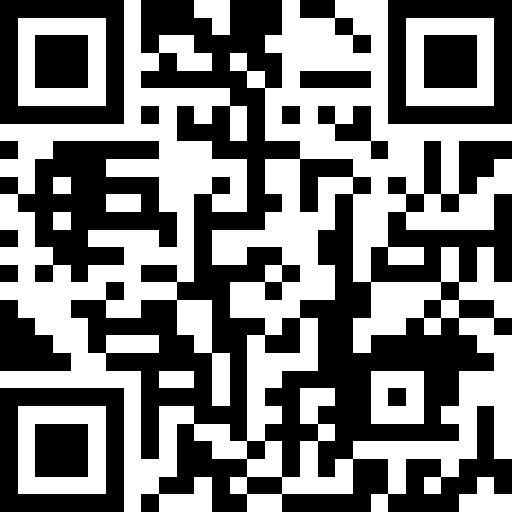Title Page
-
Client/Site
-
Conducted on
-
Prepared by
-
Location
-
Job Number
-
Site Superintendents
Untitled Page
First Aid Facilities
-
Are first aid cabinets clean, readily avaialable and easily readily accessible to workers at the site?
-
Are there any expired first aid items in the kit?
-
Are employees aware of the location of the first aid kit?
Fire Prevention and Emergencies
-
Does the current Job Safety Analysis display emergency contact names, addresses and numbers?
-
Is personnel aware of exits and rally point locations?
-
Are evacuation plans displayed and understood by site personnel?
-
Are fire extinguishers readily available and clear of obstructions?
-
Flammable liquid containers are properly labeled.
-
Flammable/Combustible material spills are cleaned up immediately.
-
Site trailer fire extinguishers are inspected monthly.
-
Hot work permits are obtained and complted before start of work.
-
Fire watch remains present at the hot work location for 30 minutes after the work is completed.
Personal Protective Equipment
-
Are safety glasses (stamped Z87.1) worn?
-
Are protective goggles, face shield used where there is a danger of flying particles or corrosive materials splash?
-
Are employees utilizing the correct type of glove? leather and/or cut resistant (A4 as minimum)?
-
Face protection is being worn when burning, welding, cutting, grinding or chipping.
-
Is head protection worn correctly and where required?
-
Is hearing protection worn as required?
-
Dust masks, respirators readily avaialble to protect the worker from nuisances, fumes, etc?
-
Are safety toed boots worn by GENESYS site personnel and/or its contractors?
-
Are high visibility clothing (including vests) worn where required?
-
Fall protection is used for work at or above 6 feet (some customers may have more stringent requirements).
-
Eye wash stations are identified, easily accessible, cleared or any debris and in working condition.
-
Adequate supplies of common PPE are available.
Pre Task Plans
-
Pre task plans are applicable, effective and accurately describes the work being done?
-
Specific tools, equipment and PPE are identified in the pre-task plan.
-
Potential hazards are listed for each step of the task.
-
Proper control measures are listed for each hazard.
-
Correct and up-to-date emergency information is listed on the the pre-task plan.
-
Fire watch requirements are included in the pre-task plan.
-
Areas surrounding hot work are discussed to be cleared from any flammable or combustible materials.
-
Supervisors have reviewed the pre-task plan with crew before starting work.
-
Workers have reviewed and signed pre-taks before starting work.
-
Changes have been made as needed to existing pre-task plans.
-
Are the weekly safety topics discussed with personnel? Provide documentation of the discussion.
-
Are daily briefings completed accordingly? Provide copies of the last three safety daily safety meetings.
-
Fall Protection
-
Employees that are exposed to fall hazards are tied off.
-
Anchorage points meet the 5,000 lbs. (per person) minimum requirement.
-
Fall arrest system (full body harness, shock absorbing lanyard, and anchorage point) are properly used and inspected.
-
Anchor point locations have been identified.
-
Fall protection is being properly maintained and stored.
-
Fall protection is being worn properly.
-
Rigging is not being used for fall arrest.
Housekeeping
-
Are working surfaces clear of obstacles?
-
Are work benches clear of debris?
-
Are tool, that are not in use, put away?
-
Is the job site generally orderly, with trash or waste materials disposed of correctly and frequently?
-
Are flammable materials kept away from igniting sources?
-
Are walking surfaces free from tripping unused items such as hoses, power cords, welding leads, etc.,
Slips, Trips and Falls
-
Are entry and walkways kept clear?
-
Are floor surfaces even and uncluttered?
-
Are stairs and risers kept clear?
-
Are floor surfaces free of liquid spills?
-
Are walking surfaces in good condition?
-
Do personnel keep 3-point of contact on ladders?
-
Is fall protection equipment inspected before use?
-
Is there fall protection practices in places while working above 4', or within 6' of a leading edge?
-
Are all floor openings fully barricaded or protected with secured covers and warning labels?
Material Handling
-
Does the Job Hazard Analysis discuss the handling of materials?
-
Are pinch points, crush or struck hazards discussed in detail in the JSA with incident preventive methods?
-
Have personnel been briefed (and records available for review) on lifting and back safety?
-
Are forklift operators identified and certified to operate the equipment?
-
Do employees practice "buddy lifting" while lifting materials exceeding 50 lbs?
-
Are pinch points, strain and sprain hazards identified and discussed in the daily safety briefing?
- Yes
- No
- N/A
-
If applicable, during the process of removing flights, do employees remain in the clear from all rigging materials being used?
Rigging
-
Is rigging inspected prior to use?
-
Do hooks used for hoisting have a safety latch in place?
-
Are there any signs of deformation, cracks or wear on shackles?
-
Are the any signs of cuts, abrasions, or damage to slings?
-
Do hooks display cracks, deformities or excessive wear?
-
Are there any kinks, broken wires, crush, "bird caging" or rust in wire ropes?
-
Are there any excessive wear, deformation or thread damage to eye bolts?
-
Are anchor points structurally sound and capable of supporting the intended load?
-
Are load rating markings (tags) on all rigging components clear and legible?
Powered Industrial Trucks - Forklifts
-
Does each industrial truck have a warning device that can be heard above the normal noise in the operating area?
-
Are forklifts loads lowered while the truck is traveling?
-
Does the operator rest the forks completely on the ground when not in use?
-
Does the operator wear the seatbelt as required?
-
Is the operator prohibited from carrying loads over personnel and taps the horn before setting the equipment in motion?
-
Are forklifts inspected daily before use?
-
Are only trained personnel allowed to operate industrial trucks?
Portable Power Tools and Equipment
-
Are grinders, saws and similar equipment used with appropriate safety guards?
-
Are rotating or moving parts guarded to prevent physical contact?
-
Are all cord-connected, electrically operated tools and equipment grounded or double insulated?
-
Are Ground Fault Circuit Interrupters (GFCI) used with portable electrical power tools?
-
Are defective pieces red tagged and removed from service?
Aerial Lifts
-
Daily inspection of aerial lifts are completed before use on each shift.
-
Daily inspection sheets are properly completed prior to each shift. (A picture of the current inspection is required if checking "yes")
-
Only aerial lift trained and authorized employees employees are operating aerial lifts.
-
Employees are wearing proper fall protection as required.
-
Hand Tools and Equipment
-
Are tools and equipment in good condition?
-
Are chisels, punches or other mushroomed head tools repaired or replaced?
-
Are broken handles on hammers replaced promptly?
-
Is eye and face protection worn while using hand tools that might produce flying materials or breakage?
-
Do files have handles?
-
Are tools stored correctly and in the right place when not in use?
-
Are employees using the proper tool for the task performed?
-
Are defective pieces red tagged and removed from service?
Portable Ladders
-
Are all ladders maintained in good condition?
-
Is each ladder equipped with non-slip safety feet?
-
Are ladder rungs and steps free of grease and oil?
-
Do employees face the ladder and use both hands when climbing and descending the ladder?
-
Are ladders inspected prior to use?
-
Are ladders in overall good operating condition?
Welding and Hotwork Operations
-
Are only authorized and trained personnel permitted to use welding, cutting or brazing equipment?
-
Are compressed gas cylinders examined regularly for obvious defects such as rusting or leakage?
-
Are gas cylinders kept away from heat sources?
-
Are empty cylinders marked and are the valves closed and protected by valve caps?
-
Are cylinders, valves, couplings, regulators, hoses and apparatus kept free of oil and grease?
-
Are work and electrode lead cables inspected for wear and damage prior to use, and replaced as necessary?
-
When fire hazards cannot be removed, are shields used to confine heat, sparks and slag?
-
Are firewatchers assigned when welding or cutting is done in locations where a serious fire may occur?
-
Are employees who are exposed to the hazards of welding, cutting or brazing protected with personal protective equipment?
-
When working in confined spaces, are tests for toxic and combustible gases taken prior to welding, cutting or brazing?
Hazard Communication
-
Are SDSs readily available to workers on site?
-
Are flammable liquids in approved safety cans?
-
Are flammable liquids storage containers labeled properly?
-
Are hazardous containers labeled appropriately?
-
Are there supplies on hand for the control of hazardous spills?
-
"Hazard", "DANGER", "CAUTION" signs posted as necessary?
-
Are SDSs radily avaialable on site?
Confined Space Operations
-
Is a Confined Space Entry Permit, signed by the entry supervisor, provided prior to any permit required confined space?
-
Are all lines to a confined space containing inert, toxic, flammable or corrosive materials, shut off and blanked, disconnected or separated before entry?
-
Are gas tests performed for oxygen deficiency, toxic substances and explosive concentrations before confined space entry?
-
Is the atmosphere inside the confined space periodically tested or continuously monitored during the conduct of work?
-
Is there an assigned safety standby employee outside of the confined space, when required, whose sole responsibility is to watch the work in progress, sound an alarm and render assistance if necessary?
-
Before gas welding or cutting is started in a confined space, are hoses checked for leaks, compressed gas cylinders forbidden in the confined space, torches lighted outside the confined space, and is the confined area tested for toxic and combustible gases?
-
Is exhaust ventilation required when welding or hazardous materials are used in a confined space?
-
Is there a confined space emergency plan in place?
-
Are air monitors calibrated as required before use?
Incident Procedures
-
Do personnel know the steps to follow upon the occurrence of an incident, near miss, unsafe condition or unsafe act?
Unsafe Acts/Conditions
-
Have any unsafe acts or conditions been reported and effectively addressed?
Control of Hazardous Energy
-
Are proper Lockout/Tagout procedures in place?
-
Does the authorized employee attempt to restart or operate the equipment prior to beginning work?
-
Are locks uniquely identified, uniquely keyed, and only used for the purpose of Locking/Tagging?
-
Can the employee identify all hazardous energy sources and associated hazard for the equipment or machine locked out?
-
Have the proper procedures for de-energizing the equipment or machine been verified?
-
Does the employee demonstrate the proper steps for the placement, removal and transfer of Lockout/Tagout devices?
-
Before releasing the machine or equipment from lockout/tagout, does the authorized employee ensure all employees are safely positioned?
-
Before releasing the machine or equipment from lockout/tagout, does the authorized employee notifies affected employees that the Lockout/Tagout devices have been removed?
Signing Off
-
Name of Safety Representative
-
Signature of Safety Representative
-
Superintendent Name
-
Superintendent Signature










